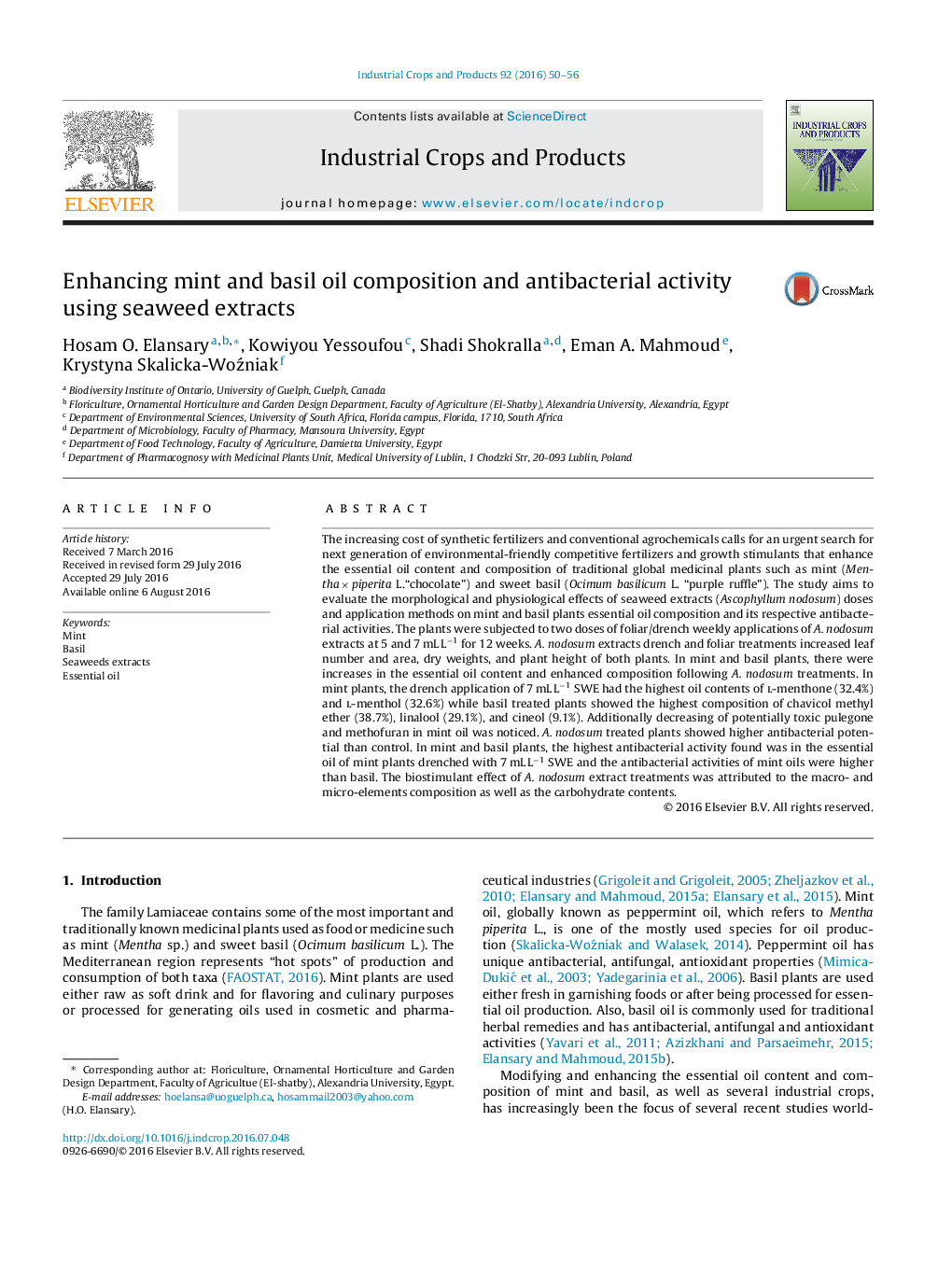| Article ID | Journal | Published Year | Pages | File Type |
|---|---|---|---|---|
| 4512014 | Industrial Crops and Products | 2016 | 7 Pages |
•The study target the essential oil content and compositions of mint and basil plants following the use of seaweed extracts as biostimulants.•Our tests reveal that increases in the essential oil content and enhanced composition reflected on the respective antibacterial activities following seaweed treatments. Mint treated plants showed the highest oil contents of l-menthone (32.4%) and l-menthol (32.6%) while basil treated plants showed the highest composition of chavicol methyl ether (38.7%), linalool (29.1%), and cineol (9.1%).
The increasing cost of synthetic fertilizers and conventional agrochemicals calls for an urgent search for next generation of environmental-friendly competitive fertilizers and growth stimulants that enhance the essential oil content and composition of traditional global medicinal plants such as mint (Mentha × piperita L.“chocolate”) and sweet basil (Ocimum basilicum L. “purple ruffle”). The study aims to evaluate the morphological and physiological effects of seaweed extracts (Ascophyllum nodosum) doses and application methods on mint and basil plants essential oil composition and its respective antibacterial activities. The plants were subjected to two doses of foliar/drench weekly applications of A. nodosum extracts at 5 and 7 mL L−1 for 12 weeks. A. nodosum extracts drench and foliar treatments increased leaf number and area, dry weights, and plant height of both plants. In mint and basil plants, there were increases in the essential oil content and enhanced composition following A. nodosum treatments. In mint plants, the drench application of 7 mL L−1 SWE had the highest oil contents of l-menthone (32.4%) and l-menthol (32.6%) while basil treated plants showed the highest composition of chavicol methyl ether (38.7%), linalool (29.1%), and cineol (9.1%). Additionally decreasing of potentially toxic pulegone and methofuran in mint oil was noticed. A. nodosum treated plants showed higher antibacterial potential than control. In mint and basil plants, the highest antibacterial activity found was in the essential oil of mint plants drenched with 7 mL L−1 SWE and the antibacterial activities of mint oils were higher than basil. The biostimulant effect of A. nodosum extract treatments was attributed to the macro- and micro-elements composition as well as the carbohydrate contents.
